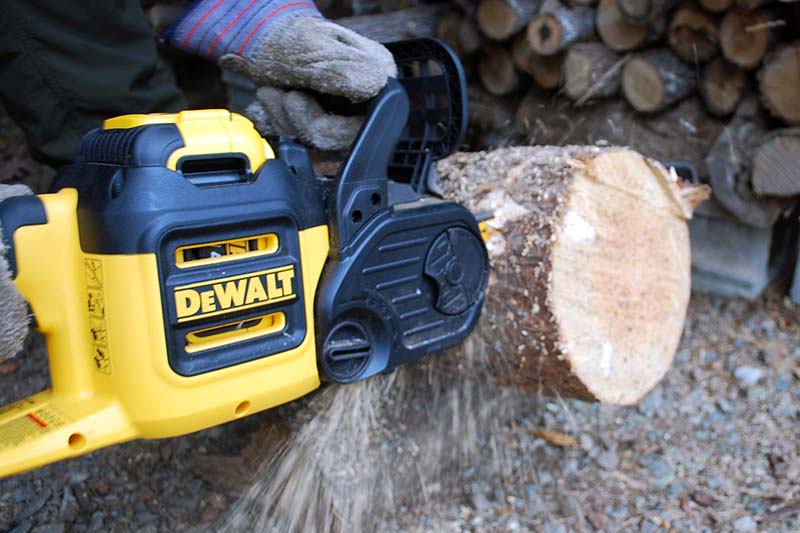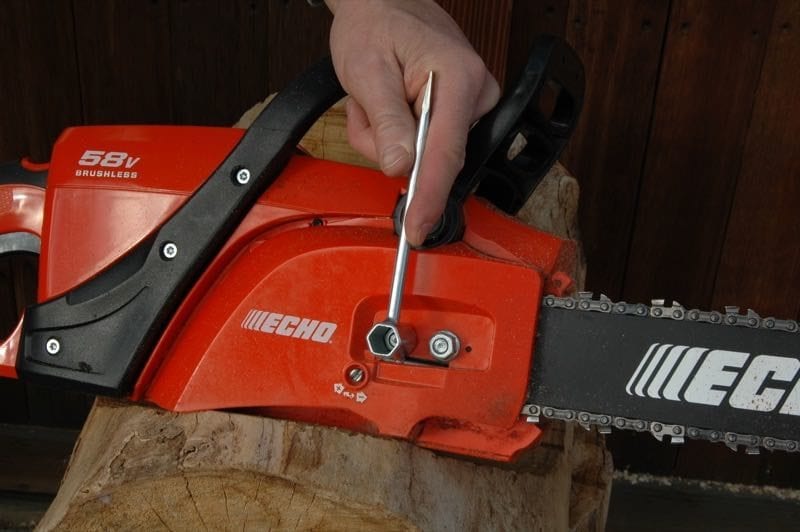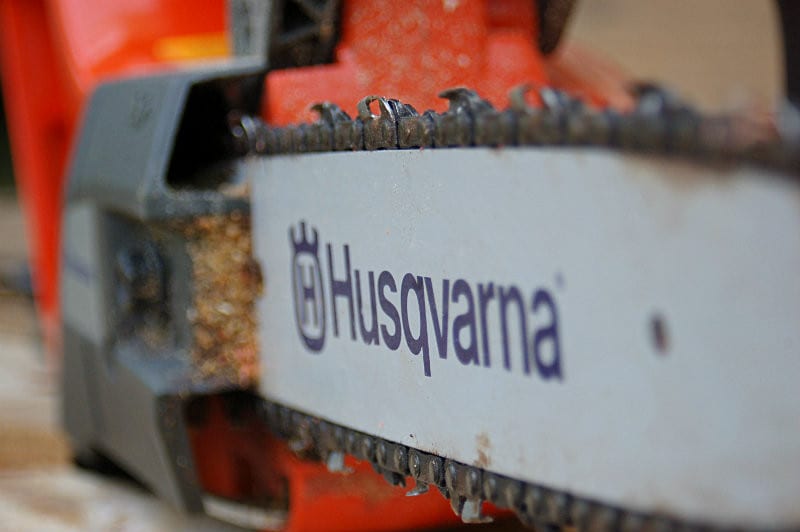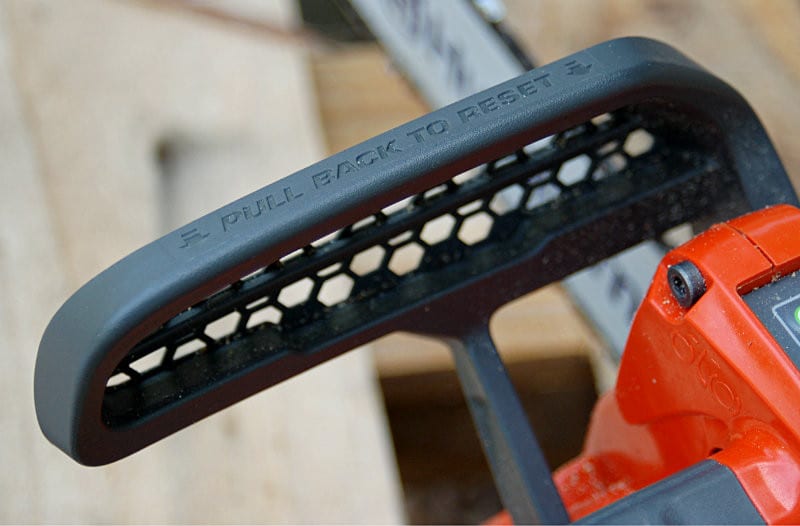It occurred to us that an article on chainsaw basics might be just the ticket for new apprentices getting into the field. It might even be a good refresher for Pros who do this day in and day out. The average chainsaw injury requires 110 stitches, so wear protective gloves, boots, chaps, and eye protection. Never let go of your grip on a saw if it kicks back. Hold tight, and rely on the brake to stop the chain before it hits you. On saws without a brake, hold even tighter. Never use a saw “left-handed”—that is, with your left hand holding the rear handle. Your right arm is put in a dangerous position over the bar, and the brake will not protect you.
Chainsaw Basics 101: Check the Chain Tension
Check the chain tension often. A chain shouldn’t feel slack, but you should be able to lift it 1/4-inch or so off the bar easily with your fingertips. A new chain or a cold chain heating up may become loose after just a few minutes. Heat expands metal, so it may require adjustment a few times an hour. Never leave a warm chain tight on the bar. As it cools and contracts, it can ruin bearings or even bend a driveshaft.
Check That Bar & Chain Oil
Make sure the bar and chain oil is flowing before cutting. Hold the tip of the running saw in front of a surface to check that oil is slinging off the chain. Keep the tank full and the hole that feeds oil to the bar clear. Cutting even one minute without oil can overheat the bar and overtax the saw’s motor.
Chain Brakes are Handy
One of our favorite chainsaw basics is using the chainsaw brake as a safety switch. Flip the brake to the stop position whenever you finish a cut or walk around with the saw. You also want to do this whenever you check the chain tension with your fingers. We may joke about safety third, but this is one tip that could save you from harm. This goes double for newer battery-powered chain saws which require a mere trigger pull to start!
Sharpen the Chain and Keep it Sharp
Keep your chainsaw chains sharp! Many users struggle through cutting with dull chains. It’s dangerous, and it ends up making the jobs take triple the time and effort. It’s also hard on the saw. Small saws like the cordless tools in our 36V cordless chainsaw shootout have little reserve power, so expect their cutting performance to plummet when using a dull chain. Remember, accidental contact with dirt or pavement for only a fraction of a second is long enough for every tooth to hit several times, so your chain sharpness should be checked often.
Using Bio or Vegetable-based Bar and Chain Oil Helps
Consider switching to a biodegradable vegetable-based bar and chain oil. After a weekend of firewood cutting, you’ll come to realize that you’ve dumped a gallon of petroleum oil on your property. Besides being toxic, the wood chips soaked in it won’t readily decompose. Vegetable oil can dry out and solidify over time when exposed to air, but I haven’t had any problems even when storing a saw many months. Wipe off the oiler hole, and it’s ready to go.
Guard Against Leaks
Most saws leak oil when they’re sitting. You either need to drain the tank or prepare for a puddle of oil under those saws when they’re being stored. Some high-end saws have oiler valves that close and won’t leak like typical saws.





